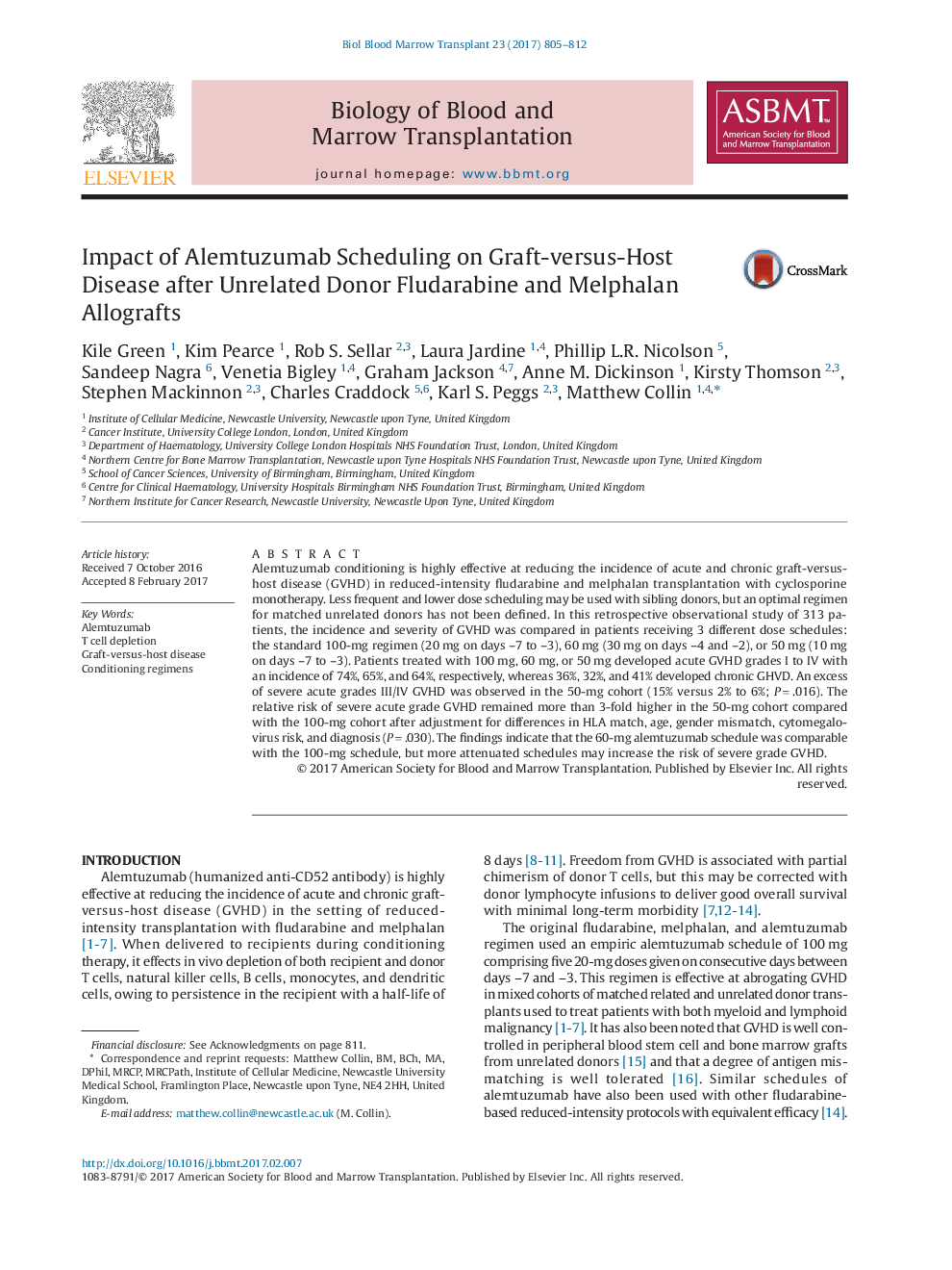| Article ID | Journal | Published Year | Pages | File Type |
|---|---|---|---|---|
| 5524088 | Biology of Blood and Marrow Transplantation | 2017 | 8 Pages |
â¢Alemtuzumab dosing in unrelated reduced-intensity transplantation is undefined.â¢Alemtuzumab 60âmg provides equivalent control of GVHD compared with 100âmg.â¢Alemtuzumab 50âmg is associated with a 3-fold increased risk of severe acute GVHD.
Alemtuzumab conditioning is highly effective at reducing the incidence of acute and chronic graft-versus-host disease (GVHD) in reduced-intensity fludarabine and melphalan transplantation with cyclosporine monotherapy. Less frequent and lower dose scheduling may be used with sibling donors, but an optimal regimen for matched unrelated donors has not been defined. In this retrospective observational study of 313 patients, the incidence and severity of GVHD was compared in patients receiving 3 different dose schedules: the standard 100-mg regimen (20âmg on days -7 to -3), 60âmg (30âmg on days -4 and -2), or 50âmg (10âmg on days -7 to -3). Patients treated with 100âmg, 60âmg, or 50âmg developed acute GVHD grades I to IV with an incidence of 74%, 65%, and 64%, respectively, whereas 36%, 32%, and 41% developed chronic GHVD. An excess of severe acute grades III/IV GVHD was observed in the 50-mg cohort (15% versus 2% to 6%; Pâ=â.016). The relative risk of severe acute grade GVHD remained more than 3-fold higher in the 50-mg cohort compared with the 100-mg cohort after adjustment for differences in HLA match, age, gender mismatch, cytomegalovirus risk, and diagnosis (Pâ=â.030). The findings indicate that the 60-mg alemtuzumab schedule was comparable with the 100-mg schedule, but more attenuated schedules may increase the risk of severe grade GVHD.
Graphical AbstractDownload high-res image (69KB)Download full-size image
